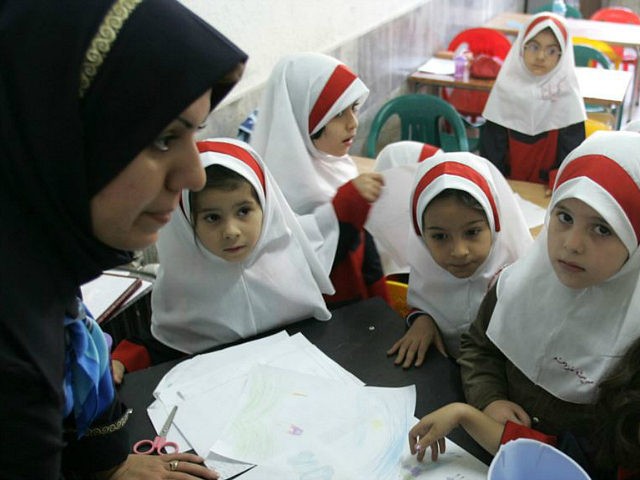Poorly paid teachers in Iran are participating in strikes that began Tuesday in at least 27 cities across the country this week to demand improvements to their working conditions, according to several news reports citing pictures posted online.
“The aim of the sit-ins is to force Iran’s rulers to respect their duties defined by the country’s constitution and provide free, fair, and high-quality education for all, as well as a respectable livelihood for the teachers,” Coordinating Council of Teachers Syndicates in Iran (CCTSI), the umbrella organization for Iranian teachers’ unions, said in a statement, Radio Farda, a component of Radio Free Europe/Radio Liberty (RFE/RL), reported Wednesday.
“Some students have reportedly joined their teachers in the strike, telling local websites they cannot afford the high tuition fees demanded by their schools,” Radio Farda added.
The council added that the pictures are part of the“second round” of strikes following demonstrations in mid-October aimed at pressuring Tehran to implement educational reforms and bring an end to mismanagement, Voice America (VOA) noted.
CCTSI also said teachers were protesting “perceived violations of the educational rights of students and minorities,” VOA also reported, adding that the pictures posted on the CCSTI depict “elementary and high school teachers staging sit-ins and holding protest signs in and outside their offices in at least 27 Iranian cities Wednesday.”
“Iranian social media users earlier had posted photos of what they said were teachers on strike in at least a dozen cities,” the news outlet added, noting that most of the photos came from strikes at schools in northwestern Iran’s predominantly Kurdish regions.
The strikes this week follow similar demonstrations in mid-October that came in the wake of CCTSI urging teachers to go to schools but to refrain from teaching their students.
During the sit-in demonstrations in mid-October, which took place in more than a dozen Iranian towns and cities, teachers were explicitly protesting “unfair wages,” “degradation of education quality,” “inflation,” and “the continuation of the arrest of [teachers rights] activists,” CCTSI said, according to RFE/RL.
U.S.-designated state-sponsor of terrorism Iran does not respond well to labor unions, reportedly tightening their grip on them in recent years while showing a “particular vitriol” toward those representing educators, Iran’s Human Rights Activist News Agency noted in September.
“Three prominent Iranian education activists serving multiyear jails terms for alleged national security offenses at Tehran’s Evin prison include Mohammad Habibi, Mahmoud Beheshti Langroodi and Esmail Abdi,” VOA pointed out.
Describing the latest round of strikes, Radio Farda explained:
CTSI and other teachers’ unions have called for a halt to what they describe as the privatization of public education through the introduction of tuition fees, saying such fees are in violation of Iran’s constitution, which requires the government to “provide all citizens with free education up to secondary school, and must expand free higher education to the extent required by the country for attaining self-sufficiency.”
Teachers say that their salaries are below the poverty line. This means that based on free market exchange rates, teachers now earn less than a $100 a month. As the Iranian currency rial has lost most of its value, prices for basic necessities have also gone up in a spiral of double-digit inflation. Therefore, a single-income teacher can hardly even afford food.
While teachers are facing low ages, Iran doles out $1 billion per year to its terrorist proxies with the narco-jihadi Shiite group Hezbollah, receiving the vast majority, $700 million, the U.S. Department of State (DOS) revealed this week.
Forbes designated Hezbollah the wealthiest terrorist group in the world, noting that it generates $1.1 billion annually.
U.S. President Donald Trump’s administration has intensified sanctions against Iran, recently reimposing those that were suspended under the controversial 2015 nuclear deal.
The Trump administration pulled out fo the nuclear pact between Iran and U.S.-led world powers, citing Tehran’s reluctance to abide by its commitment to limit its controversial nuclear activities in exchange for sanctions relief.

COMMENTS
Please let us know if you're having issues with commenting.